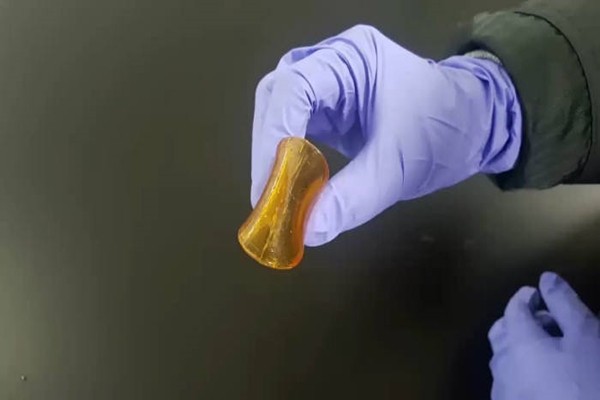High elastic material that can heal external damage on its own and has tensile strength that doubles the amount of highest level of existing tensile strength has been developed. It is expected that this material will become a foundation for early commercialization of substance with an ability to heal itself on its own which has been just a possibility in the past.
Korea Research Institute of Chemical Technology (Director Jung Soon-yong) made an announcement that a research team led by Hwang Sun-young, Ph.D., Park Jae-young, Ph.D., and Oh Dong-yeop, Ph.D., of Bio Chemical Research Center has developed a fundamental technology for a new material called ‘Elastomer’, which is able to heal itself on its own at room temperature and doubles the amount of highest level of existing tensile strength. Elastomer is high molecular substance that is able to stretch and shrink.
It has been difficult to have both self-healing and tensile strength coexist together. Current self-healing materials that work at room temperature usually use matters that are based on hydrogen bonds and provide self-healing ability by having polymers move around easily. However this makes it difficult to maintain high tensile strength which made it difficult to commercialize.
Research team focused on providing self-healing ability to a material with high tensile strength. It believed that if it adds self-healing ability to a material with high tensile strength from the start then commercialized products will be able to maintain enough amount of tensile strength.
Research team added sulfur compound to a basic framework of thermoplastic polyurethane, which has high tensile strength, and allowed double decomposition reaction (reaction where two types of compounds exchange their components with each other) to take place at room temperature.

Research team also applied additional materials so that ‘ring-flip’ phenomenon, which is a must for self-healing ability, takes place easily while also reducing density of hard parts within structure. This phenomenon has a compound alternatively changes its structure from a chair shape and a boar shape and it plays a role of increasing speed of diffusion of polymers.
This new material was able to recover 80% of its tensile strength in just two hours during a test that carried out cutting and rejoining. After six hours of the test, it even showed tensile strength that was able to lift a 5kg dumbbell.
Research team explained that this new material can be used for painting of cars, protection film for Smartphones, and materials for sensors of Industry 4.0. It is able to automatically restore any outside cracks within 30 minutes. Another characteristic is that it allows thermoplastic polyurethane process, which is already commercialized, to be used without any additional process.
“We succeeded in developing a material that has self-healing ability at room temperature and high tensile strength.” said Hwang Sun-young, Ph.D. “It is even more meaningful as this is a technology developed by an organization independently.”
Staff Reporter Kim, Youngjoon | kyj85@etnews.com